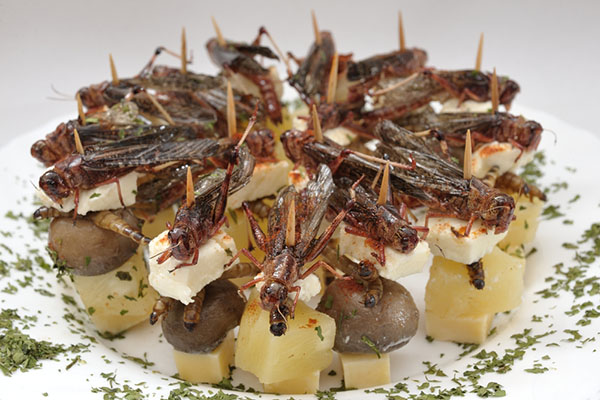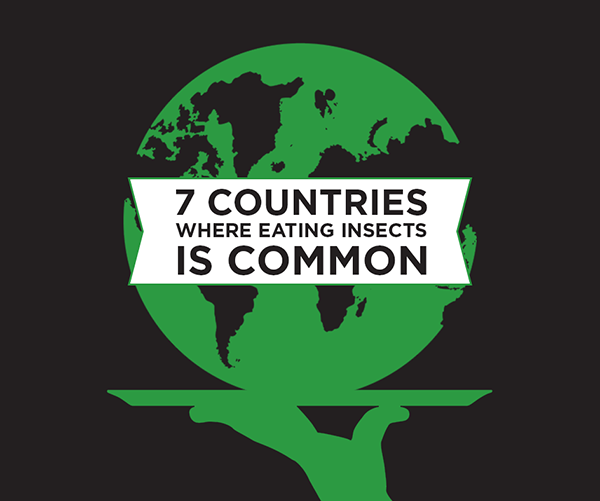If you travel the globe, you may notice that the human relationship with insects varies widely from country to country.

Some people cringe at the sight of cockroaches, while others enjoy eating cockroaches as an appetizer. Most of us here in the United States aren't entomologists or people who eat bugs, but we can certainly appreciate the many different cultures that do embrace insects in their cuisine.
Let's take a virtual tour of the world and sample a few different cultural perspectives on bugs as food.

Mexico
Of course, Mexican cuisine offers such beloved staples as tortillas, beans, chili peppers and chorizo. But travel to certain regions of the country, and you can also find ant eggs soaked in butter, chocolate- covered locusts and candy-covered worms. Worms even make their way into a popular type of Oaxacan alcohol called mezcal. If you find yourself at an authentic Mexican fiesta, you're likely to find some insects lurking on your dinner plate or in your glass.
Brazil
Each October and November, winged queen ants, or içás, descend on a small Brazilian town called Silveiras. Citizens collect the ants, remove their wings, and either fry them or dip them in chocolate. Why chocolate? The bugs supposedly taste like mint, so the combination is a no-brainer. The town even has an arts and crafts center devoted to the bug-eating tradition. There, you can buy just about any item adorned with the image of the queen ant.
Ghana
Bugs account for up to 60 percent of dietary protein in the rural African diet. For many people in Ghana, eating termites can be an important means of survival. The insects provide crucial proteins, fats, and oils, especially when other food sources are in short supply.
Thailand
Forget about peanuts and pretzels — many bars in Thailand serve fried bugs alongside their libations. Crickets, grasshoppers and a variety of worms are all considered favorite snacks in this part of the world. If you're on a date in Thailand, grab your sweetie a handful of insects to snack on as you refill her Thai tea.
China
Larvae are big in this Asian country. You can sample roasted bee larvae or fried silkworm moth larvae — both rich in copper, iron, riboflavin, thiamin and zinc. While you're picking out that beautifully embroidered silk dress or jacket, consider that the same silkworms you had with lunch helped make it happen. They can produce 500 to 1,200 silken threads in 72 hours.
The Netherlands
Some Dutch citizens are trying to bring bug-eating culture to their home country by making chocolate infused with ground mealworms. The Dutch are all about being culturally diverse and receptive to foreign influences, so eating insects is right up their alley.
The United States
Surprise, surprise. You've probably seen reality TV shows where contestants are challenged to consume bugs — an idea which thoroughly disgusts many Americans. But if you've ever worn red lipstick or eaten red candy as a snack, you've likely ingested the insects used to produce that red dye, called cochineal.
Bugs certainly possess nutritional benefits, and many other countries acknowledge and appreciate their unique flavors. Still, you don't exactly want bugs inviting themselves into your home (or onto your plate) uninvited. If you've got a bug problem and you aren't planning to serve the creepy-crawlies for dinner, contact Terminix. We'll help you keep the bugs in their place — outside your home.



